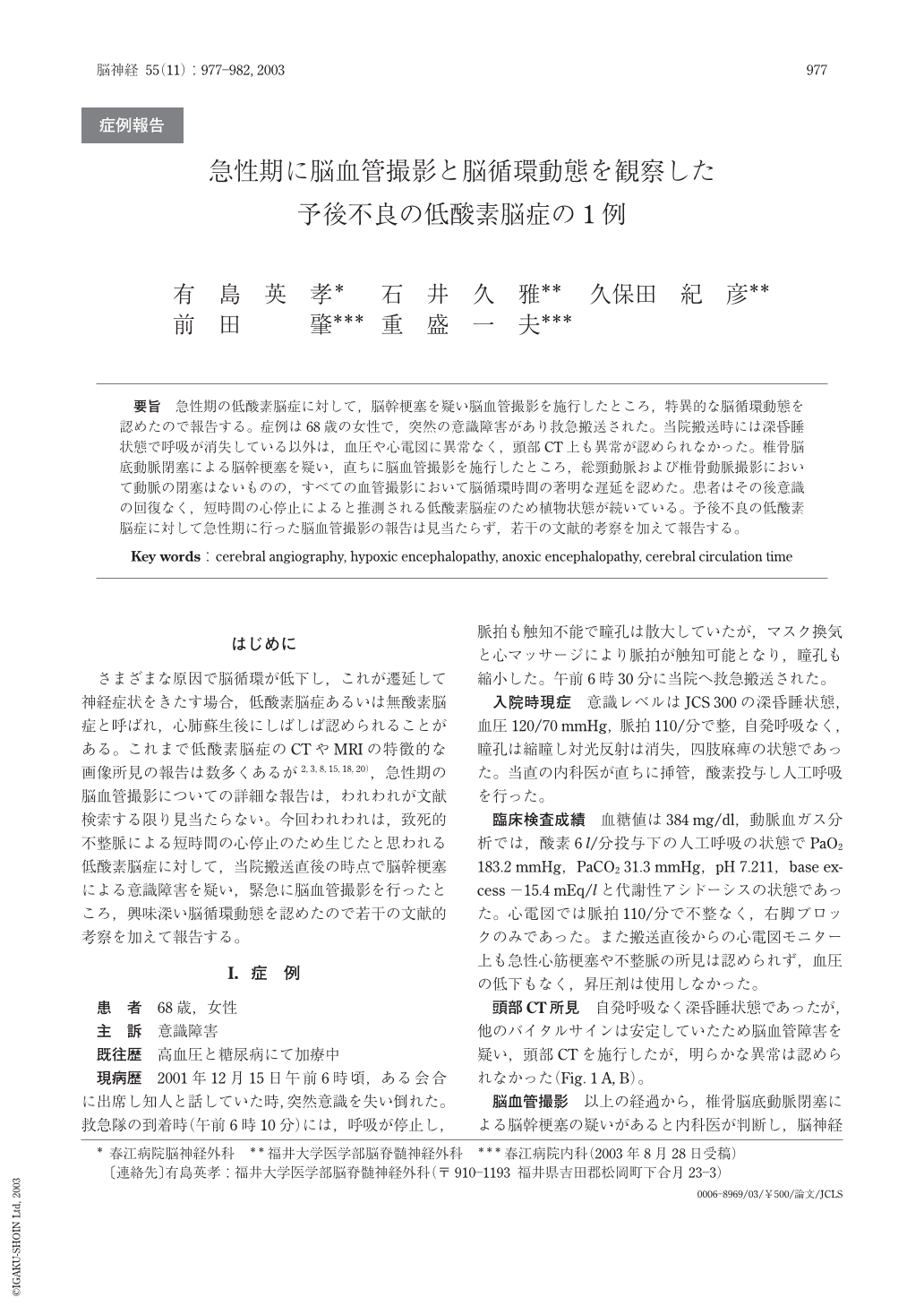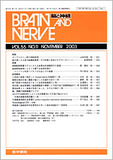Japanese
English
- 有料閲覧
- Abstract 文献概要
- 1ページ目 Look Inside
要旨 急性期の低酸素脳症に対して,脳幹梗塞を疑い脳血管撮影を施行したところ,特異的な脳循環動態を認めたので報告する。症例は68歳の女性で,突然の意識障害があり救急搬送された。当院搬送時には深昏睡状態で呼吸が消失している以外は,血圧や心電図に異常なく,頭部CT上も異常が認められなかった。椎骨脳底動脈閉塞による脳幹梗塞を疑い,直ちに脳血管撮影を施行したところ,総頸動脈および椎骨動脈撮影において動脈の閉塞はないものの,すべての血管撮影において脳循環時間の著明な遅延を認めた。患者はその後意識の回復なく,短時間の心停止によると推測される低酸素脳症のため植物状態が続いている。予後不良の低酸素脳症に対して急性期に行った脳血管撮影の報告は見当たらず,若干の文献的考察を加えて報告する。
We present an angiographic feature of anoxic encephalopathy in the acute phase. A 68-year-old woman suddenly presented with deep coma. Examinations of her blood and electrocardiography did not reveal the origin of consciousness disturbance, and computed tomographic (CT) scans demonstrated no significant findings. We immediately performed cerebral angiography because we suspected brain stem infarction. A 3-vessel study (bilateral carotid and left vertebral angiography) revealed remarkable delays in cerebral circulation time or arteriovenous circulation time, although it did not show occlusion of cerebral vessels. The follow-up brain magnetic resonance (MR) images revealed anoxic encephalopathy, which might be derived from transient cardiac arrest. The patient has been in a vegetative state for one year. Although many reports have described CT scans and MR images of anoxic encephalopathy in the acute or subacute phases, there have been no reports about the angiographic features. We found remarkable delays in cerebral circulation time in the acute phase of anoxic encephalopathy, which was considered to be caused by cytotoxic edema from severe hypoxia or ischemia.

Copyright © 2003, Igaku-Shoin Ltd. All rights reserved.


